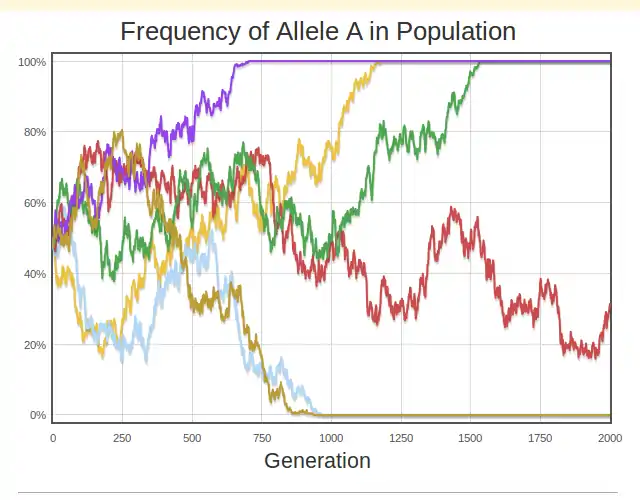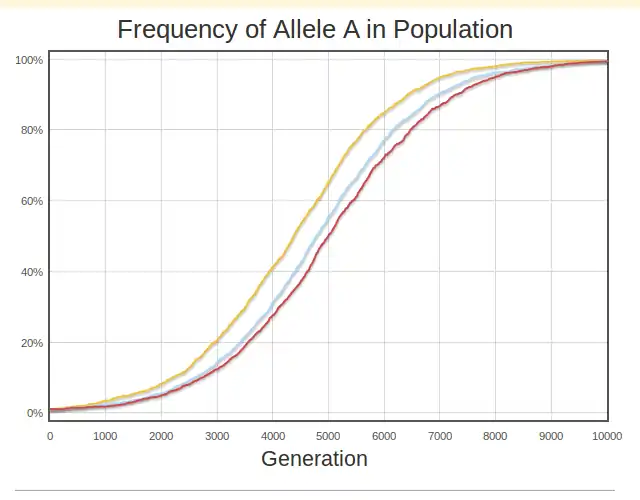Red Lynx
Red Lynx is a population genetics simulator written in client-side Javascript by Dr. Reed A. Cartwright. It involves the manipulation of a number of evolutionary forces to explore their effects on the proportion of two alleles –A and a– in the population.[1]
| We're all Homo here Evolution |
| Relevant Hominids |
| A Gradual Science |
| Plain Monkey Business |
v - t - e |
Variables
The user has control over a number of variables in the simulation:
| Name | Description | Minimum Value | Maximum Value |
|---|---|---|---|
| Generations | The number of generations that the simulation runs for | 0 | 10000 |
| Population Size | The size of the population in the simulation | 10 | 1000000 |
| Initial Frequency | The initial frequency of allele A | 0% | 100% |
| Selection Strength | The selection strength in favour of allele A | -1 | 1 |
| Dominance | How dominant allele A is | -2 | 2 |
| A → a Mutation Rate | The chance of A mutating into a | 0 | .01 |
| a → A Mutation Rate | The chance of a mutating into A | 0 | .01 |
| Migration Rate | The rate of migration into the system being modelled | 0% | 100% |
| Migrant Allele Frequency | The percentage of migrating organisms that carry the allele A | 0% | 100% |
Examples
Default settings
Under the default settings, the frequency of A is set at 50% and there is no selection pressure. You can experiment with unadulterated Genetic drift, like so:

You can then alter the population size and number of generations, to see how they change what is observed.
Selection pressure
By decreasing the initial frequency down to 1%, increasing the selection pressure to, say, 10-3 (1.e-3) and raising both the population and the number of generations to their maximums you can see (after a possibly considerable wait) the shape of the curve produced by the action of positive selection from a small starting population:

See also
| For those of you in the mood, RationalWiki has a fun article about Red lynx. |